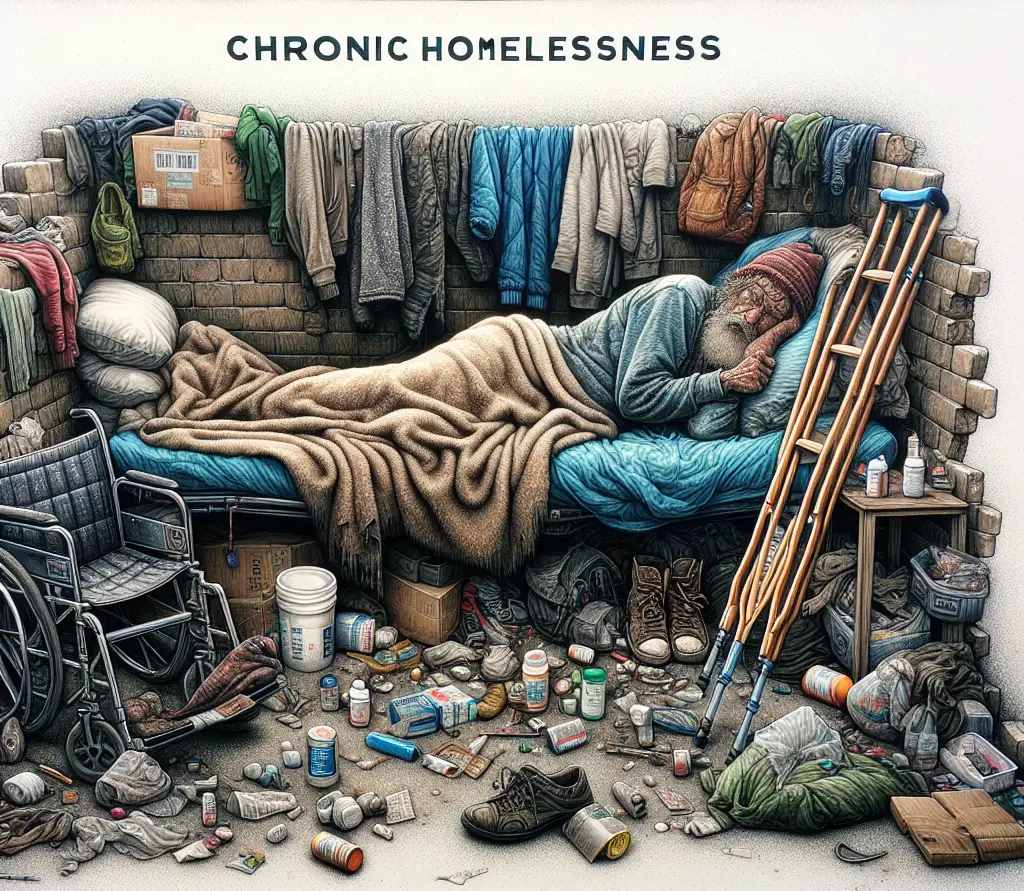Chronic Homelessness
Description
Chronic Homelessness
Definition
Chronic Homelessness is defined as a circumstance where individuals have been homeless for at least a year—or repeatedly—while grappling with a disabling condition such as a grave mental illness, substance use disorder, or physical disability. The term underscores both the length and complexity of their homelessness.
Description
Chronic Homelessness refers to a prolonged or repeated occurrence of homelessness intertwined with serious disabling conditions. This form of homelessness elucidates a specific segment of individuals within the broader homeless population who have not only suffered the harsh repercussions of housing instability for an extended period, but have also concurrently struggled with significant health challenges.
Objectives
- To eradicate chronic homelessness
- To provide immediate access to permanent housing
- To offer tailored supportive services
- To promote societal inclusion and integration
- To raise awareness and encourage policy changes
Mechanisms
- Providing 'Housing First' initiatives
- Offering supportive services like healthcare, mental health counseling, and addiction treatment
- Coordinating with local community organizations and government programs
- Implementing case management and social work
- Advocacy and policy changes
Benefits
- Reduction in the rates of homelessness
- Improved health outcomes for the chronically homeless
- The financial burden on emergency and healthcare services is lessened
- Enhanced community safety
- Increase in societal integration for chronically homeless individuals
Challenges
- Finding stable and long-term funding sources
- Lack of affordable housing
- Societal stigma and discrimination towards the homeless population
- Addressing the co-occurring mental health and substance abuse issues
- Difficulties in re-integration into the community
Examples
- The "Housing First" approach, widely adopted in the U.S., prioritizes providing the homeless with permanent housing as quickly as possible, then followed by supportive services.
- "Project Welcome Home" in Santa Clara County of California used a "Pay for Success" model to house and provide services to chronically homeless individuals.



